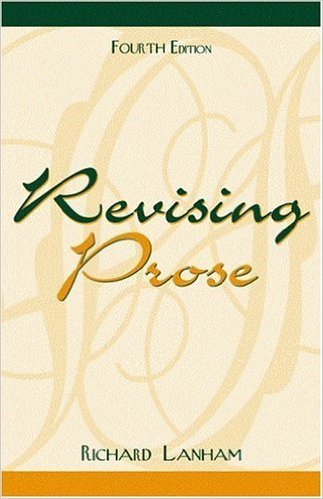Structure & style
Published writers always say revision is the sin qua non of effective prose. Dinty W. Moore just affirmed it in here my interview with him—he claims to produce weak first drafts, which become strong as they undergo up to 50 revisions. In her new The Art of Memoir, just reviewed, Mary Karr says one of her poems might take 60 versions. “I am not much of a writer,” she says, “but I am a stubborn little bulldog of a reviser.”
I used to think I was a great reviser myself. Probably because I edit and polish as I go, and then polish some more. Recently I’ve seen that two factors that impair my revising also seem to afflict some other writers.
The first issue involves resistance to complete structural overhauls. I saw this in my book. I put it through six versions, which embodied two excellent, hired developmental edits; one free problematic one; a paid whole-book copy edit; and countless piecemeal edits from friends and fellow writers. After all that, I resisted—because I feared—the mere idea of soliciting one more opinion. I was scared that someone would show me clearly that I needed a whole new approach that would send me back to the blank screen.
[Cheryl Strayed’s Wild taught me structure.]
I’ve seen this resistance in other writers, and it’s a problem if the writer has stopped too soon—no matter how many years s/he’s labored. Ironically, and thankfully, while reading Cheryl Strayed’s Wild at the eleventh hour, I saw a key structural move I needed. And a new template for my prologue. I’ve written about this breakthrough, which I saw only because of years of work, including the advice I had been receptive to. After learning how to use backstory from Strayed, and writing a new prologue that like hers showcases a dramatic moment, I knew my book was ready.It gives me chills to recall that an editor had actually suggested, at the very start of my writing, the restructuring I took from Wild—but I’d forgotten his advice. At the time, I didn’t understand why it would be better to scatter memories of my father throughout the book, rather than corral him in one chapter. Strayed’s artful deployment of her own backstory turned on the light.
Using a prose revision process: Richard Lanham’s method
Recently it was painful to follow advice and strip an entire thread from a long essay (discussed) I drafted over the summer. My test readers said it didn’t work within the overall story. At first, I tried to ignore them. I’d had such hopes for it, and it was so much work to write.
The essay flows from my finding an old cane; its contested element concerned my wife’s recuperation from foot surgery—why I found the cane in the first place. “But she really grounds the essay,” I protested. Inwardly I agreed that I hadn’t managed to link the tale of her foot to the essay’s larger themes. When one reader pointed out my essay’s true organizing principle, it helped me push off stage my sore-footed wife—she was thrilled to be cut—and to shine the spotlight elsewhere.
Then an awful, humbling problem materialized. “The essay is flat,” said my friend Beth. The recovery thread had been scenic and lively, which obscured that my syntax in the main threads got turgid. I was trying hard to be reflective—too hard. Too many prepositions, too much passivity, to many “is” and “was”—the old “to be” issue—and lots of clauses. These are galling first-draft problems. An example of the “is problem”:
It was rewarding vs. It felt rewarding.
The first is a godlike but bland statement of “fact” that obscures the person doing the feeling and loses subjectivity’s honest idiosyncratic appeal. Focused on whipping up a new dish, I had dropped a trusty old casserole dish on my toe.
Beth is a scholar, and her essays on writers are clear and graceful. “What I do,” she said, “is follow Richard Lanham’s steps in Revising Prose. I circle the prepositions, rework some ‘is’ forms, make everything active. I look for dangling modifiers because that’s a problem for me.” I knew of Lanham but hadn’t thought I needed him. Or, rather, hadn’t thought I needed any systematic process—because “I rewrite.”
I looked up Lanham’s new, fifth edition of Revising Prose on Amazon found a stunning textbook price: $50 for its 176 pages. Instead, I ordered the $5.50 fourth edition. There’s a fine review of the new edition, by C. J. Singh, of Berkeley, California, which explains Lanham’s core principles.
An excerpt of Singh’s review:
In each of the five editions of “Revising Prose,” Lanham added fresh examples and exercises to its core content: the Paramedic Method comprising eight steps as follows.
1. Circle the prepositions;
2. Circle the “is” forms;
3. Find the action;
4. Put this action in a simple (not compound) active verb;
5. Start fast – no slow windups;
6. Read the passage aloud with emphasis and feeling;
7. Write out each sentence on a blank screen or sheet of paper and mark off its basic rhythmic units with a “/”;
8. Mark off sentence length with a “/.”
Basically, Lanham’s Paramedic Method advises you to delete prepositional phrases and “is” forms and replace them with active verbs.
To foster diversity in my diction and to avoid misusing words, recently I adopted John McPhee’s practice of drawing boxes around distinctive or mundane nouns, verbs, adjectives in his final draft. Then you look up the words, consider alternatives. Now I’m going to try Lanham’s process.
For years, my most effective revision standby has been reading my last draft aloud. Maybe it’s my trying new writing approaches—thus experiencing the dreaded learning-curve effect—or maybe it’s just my age, but it appears I need to add to my revision toolkit.
What methods are effective for you in revision?
The post Structure & style appeared first on Richard Gilbert.





